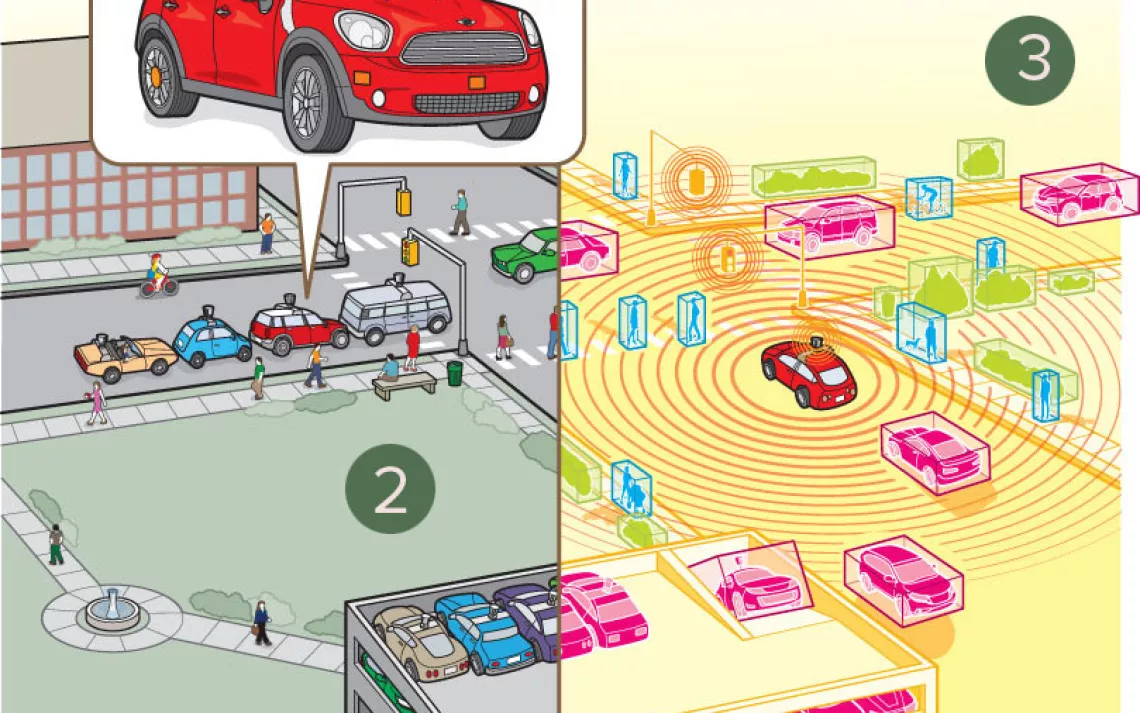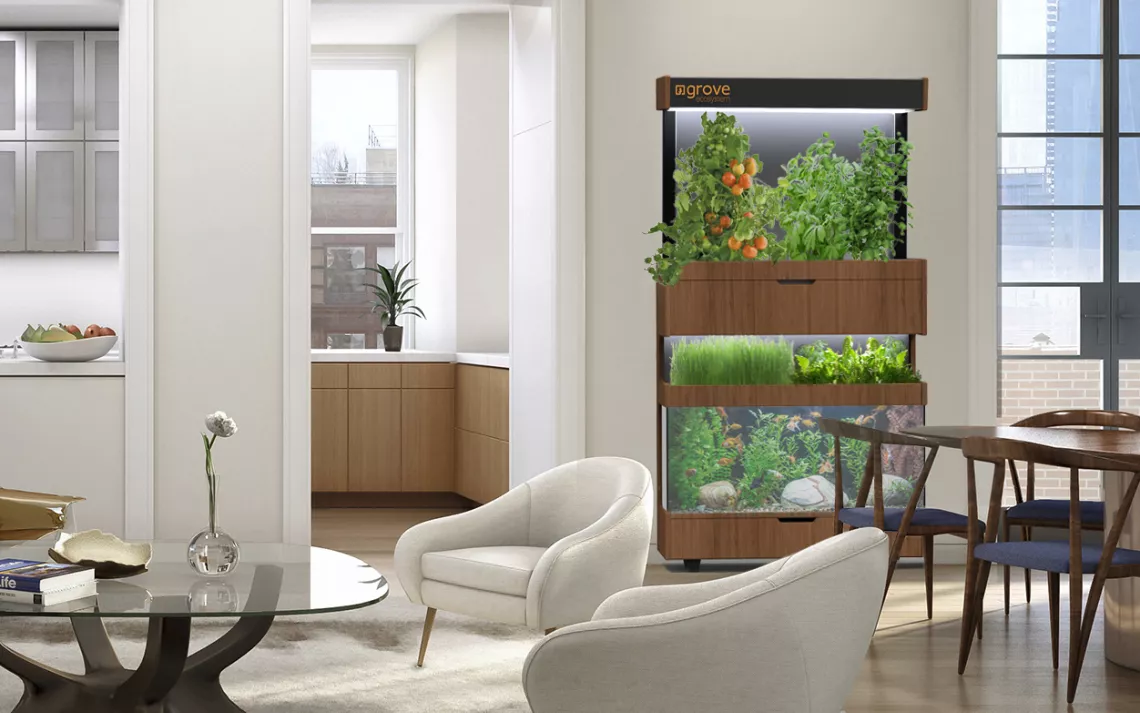Driverless Cars, Greener Cities
Most of the excitement about self-driving cars involves the prospect of getting to work while shaving or tweeting. But replacing distracted drivers with intelligent, connected cars might also save oceans of fuel, warehouses of auto parts, vast tracts of space, and thousands of lives. Automakers already offer driverless features, such as lane-departure warning and automated parking assist. Decades from now, groups of tiny, driverless vehicles might navigate the roads while packed together as tightly as rail cars, making close shaves but never a nick.

Infographic: Brown Bird Design
- U.S. transportation officials estimate that 90 percent of road accidents stem from human error. If automation can do better, it creates the possibility of smaller crashless cars that wouldn't need reinforced steel, bumpers, or even air bags. And lighter cars require a lot less energy.An array of technologies have been combined to create what's called sensor fusion, allowing drivers of autonomous cars to sit back and relax. A video camera mounted on the front windshield watches for landmarks and moving objects; a radar array measures the distance to nearby obstacles and features; and LIDAR , a spinning laser that analyzes reflected light, produces a dynamic, 3-D map that the car uses to navigate.
- Self-driving automobiles and even stoplights would chat via dedicated short-range communications, the same technology that lets you breeze through an automated toll lane. By constantly sharing information on position, speed, and braking, your car could learn of pileups before you did, resulting in speedier trips and a million fenders that would never be crumpled.
- In 2012, Volvo deployed a cluster of automated cars traveling at freeway speeds while tailgating one another at just 20 feet. A University of California study estimates that such vehicle platoons could cut fuel consumption by at least 20 percent, thanks to reduced aerodynamic drag. And packing more cars onto existing lanes could curtail the need for freeway expansions. Consider all the traffic caused by people looking for a place to park, and the gasoline burned as they circle the block. If cars dropped you off and parked themselves in tightly packed garages, all that energy would be saved and acres of parking lots could be put to better use.
 The Magazine of The Sierra Club
The Magazine of The Sierra Club



